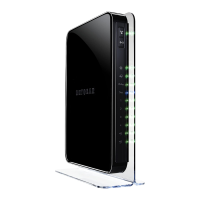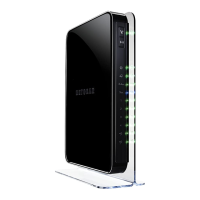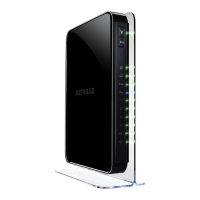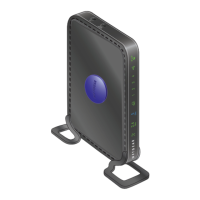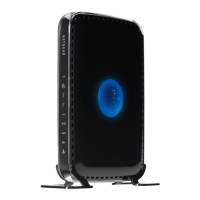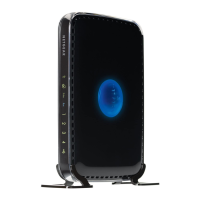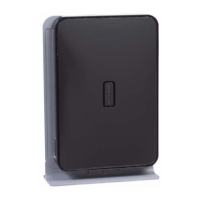Advanced Settings
103
N750 Wireless Dual Band Gigabit Router WNDR4300
On the Advanced tab, select Advanced Setup > Dynamic DNS to display the following
screen:
To set up Dynamic DNS:
1. Register for an account with one of the Dynamic DNS service providers whose names
appear in the Service Provider list.
2. Select the Use a Dynamic DNS Service check box.
3. Select the web address of your Dynamic DNS service provider
.
For example, for DynDNS.org, select www.dyndns.org.
4. T
ype the host name (or domain name) that your Dynamic DNS service provider gave you.
5. T
ype the user name for your Dynamic DNS account. This is the name that you use to log in
to your account, not your host name.
6. T
ype the password (or key) for your Dynamic DNS account.
7. If your Dynamic DNS provider allows the use of wildcards in resolving your URL, you can
select the Use W
ildcards check box to activate this feature.
For example, the wildcard feature causes *.yourhost.dyndns.org to be aliased to the
same IP address as yourhost.dyndns.org.
8. Click Apply to save your configuration.
Static Routes
Static routes provide additional routing information to your router. Typically, you do not need
to add static routes. You have to configure static routes only for unusual cases such as
multiple routers or multiple IP subnets on your network.
As an example of when a static route is needed, consider the following case:
• Your primary Internet access is through a cable modem to an ISP.
• Y
ou have an ISDN router on your home network for connecting to the company where
you are employed. This router’s address on your LAN is 192.168.1.100.
• Y
our company’s network address is 134.177.0.0.
When you first configured your router, two implicit static routes were created. A default route
was created with your ISP as the gateway
, and a second static route was created to your
local network for all 192.168.1.x addresses. With this configuration, if you attempt to access a
device on the 134.177.0.0 network, your router forwards your request to the ISP. The ISP

